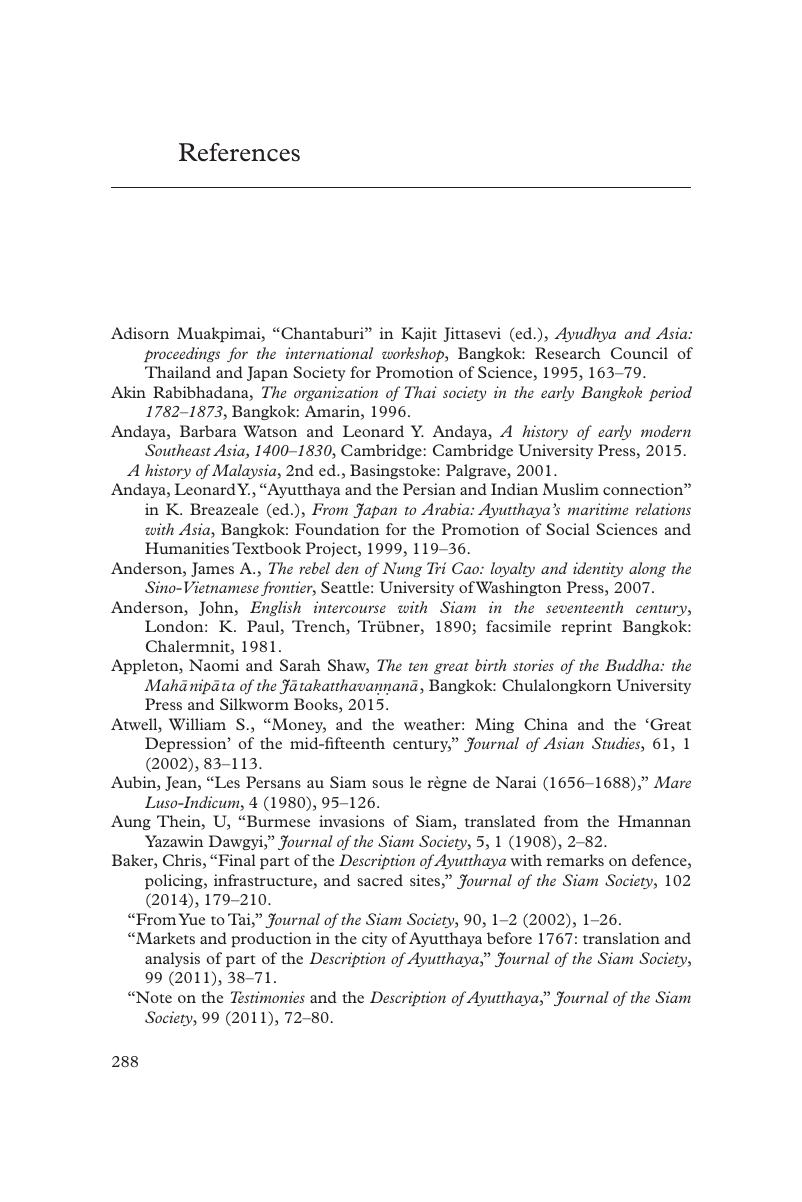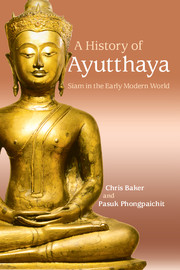Book contents
- A History of Ayutthaya
- A History of Ayutthaya
- Copyright page
- Contents
- Figures and Tables
- Maps
- Preface: Ayutthaya in History
- Acknowledgments
- Note on the Text
- 1 Before Ayutthaya
- 2 Ayutthaya Rising
- 3 An Age of Warfare
- 4 Peace and Commerce
- 5 An Urban and Commercial Society
- 6 Ayutthaya Falling
- 7 To Bangkok
- Appendix: List of Kings
- Glossary
- Notes on Some Key Sources
- References
- Index
- References
References
Published online by Cambridge University Press: 04 July 2017
- A History of Ayutthaya
- A History of Ayutthaya
- Copyright page
- Contents
- Figures and Tables
- Maps
- Preface: Ayutthaya in History
- Acknowledgments
- Note on the Text
- 1 Before Ayutthaya
- 2 Ayutthaya Rising
- 3 An Age of Warfare
- 4 Peace and Commerce
- 5 An Urban and Commercial Society
- 6 Ayutthaya Falling
- 7 To Bangkok
- Appendix: List of Kings
- Glossary
- Notes on Some Key Sources
- References
- Index
- References
Summary

- Type
- Chapter
- Information
- A History of AyutthayaSiam in the Early Modern World, pp. 288 - 315Publisher: Cambridge University PressPrint publication year: 2017



